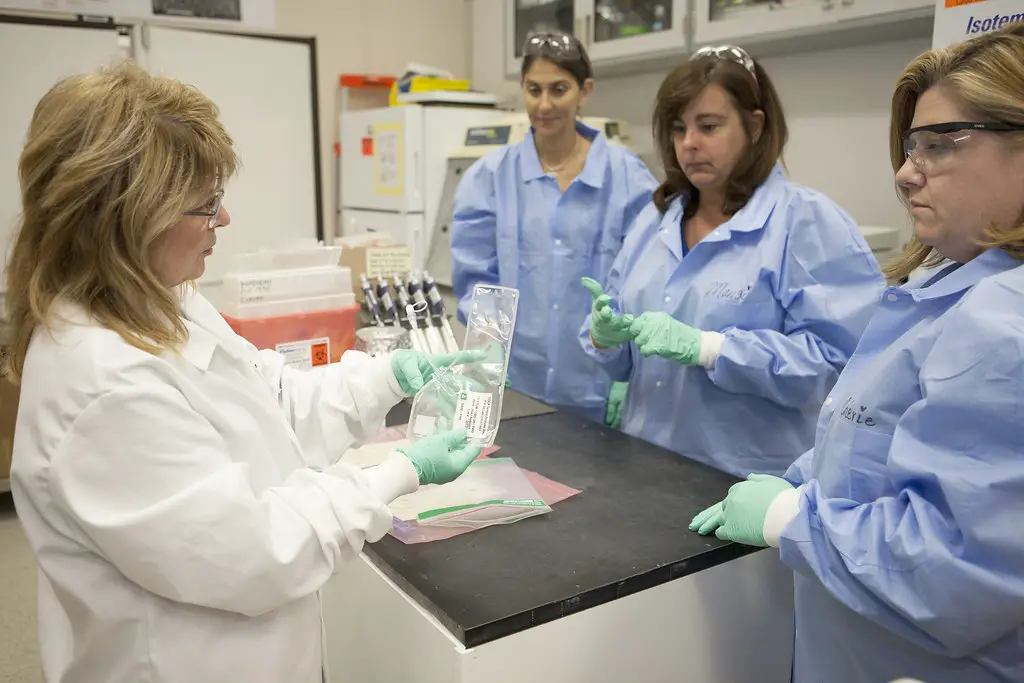Molecular food microbiology is a field of study that utilizes molecular biology techniques to understand the microorganisms present in food, including bacteria, viruses, and fungi. These techniques include PCR, DNA sequencing, and gene expression analysis, which allow for the identification, characterization, and quantification of microorganisms in food. The goal of molecular food microbiology is to improve the safety, quality, and shelf-life of food products by studying the microorganisms that can cause spoilage or food-borne illness. This knowledge can be used to design better food preservation methods and to develop new food safety guidelines.
Polymerase Chain Reaction (PCR) is a laboratory technique that is used to amplify a specific segment of DNA. It was first described by Kary Mullis in 1983, and since then it has been widely used in various fields, including food microbiology. In food microbiology, PCR is used to detect and identify specific microorganisms, such as bacteria and viruses, in food samples. It is also used to detect and identify specific genetic markers associated with food-borne pathogens, such as Salmonella and E. coli. PCR has become an important tool in food safety and quality control, as it can quickly and accurately detect the presence of harmful microorganisms in food. Additionally, PCR-based methods have been used to authenticate the origin of food products, such as meat and dairy products.
Some of the main applications of PCR in food microbiology include:
- Identification of microorganisms: PCR can be used to identify the specific microorganisms present in a food sample, such as E. coli, Salmonella, and Listeria. This information can be used to track the source of food-borne illness outbreaks and to monitor the effectiveness of food safety measures.
- Quantification of microorganisms: PCR can be used to quantify the number of microorganisms present in a food sample. This information can be used to assess the level of contamination in food products and to monitor the effectiveness of food preservation methods.
- Detection of antibiotic resistance: PCR can be used to detect the presence of genes associated with antibiotic resistance in microorganisms present in food. This information can be used to monitor the spread of antibiotic-resistant bacteria in the food supply and to guide the development of new food safety measures.
- Traceability: PCR can also be used to track the origin of food products, such as meat, dairy, and seafood, by identifying the specific microorganisms present at each step of the food production process.
- Detection of food fraud: PCR can be used to detect the presence of specific microorganisms or genetic markers that indicate the origin of food products, which can be used to detect food fraud, such as the mislabeling of products or the use of lower-quality ingredients.
- Detection of pathogenic microorganisms: PCR can be used to detect pathogenic microorganisms, such as Listeria monocytogenes, E. coli O157:H7, and Salmonella spp., that cause food-borne illness.

There are several types of Polymerase Chain Reaction (PCR) that are commonly used in food microbiology to detect and identify microorganisms present in food samples. These include:
- Traditional PCR: This is the most basic form of PCR, which amplifies a specific DNA sequence using a set of primers that bind to the ends of the target sequence.
- Real-time PCR: This is a variation of PCR that allows for the quantification of the target DNA sequence in real-time, by measuring the amount of PCR product as it is produced.
- Multiplex PCR: This is a PCR method that allows for the simultaneous amplification of multiple DNA sequences using multiple sets of primers.
- Nested PCR: This is a PCR method that involves two rounds of amplification, with the second round using a set of primers that bind within the amplified product of the first round. This allows for the detection of low levels of target DNA and to improve the specificity of the PCR assay.
- Reverse-transcription PCR (RT-PCR): This method is used to amplify RNA sequences, which are converted to cDNA by reverse transcription before the PCR amplification. It is used to detect and quantify RNA viruses, such as norovirus in food samples.
- Quantitative PCR (qPCR): This is a variation of PCR that allows for the quantification of the target DNA sequence. qPCR can be used to determine the amount of a specific microorganism in a sample, which can be useful in monitoring the effectiveness of food preservation methods.
- Loop-mediated isothermal amplification (LAMP): This is a PCR method that is used to amplify DNA sequences at a constant temperature, which can be useful for the detection of microorganisms in field settings.
- PCR-ELISA: This is a PCR method that combines the specificity of PCR with the sensitivity of ELISA, which is used to detect the presence of specific microorganisms or genetic markers in food samples.
The choice of the PCR method will depend on the type of microorganism being targeted, the sample matrix, and the available equipment and expertise.




